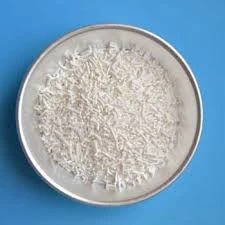
residual solvents
Understanding Residual Solvents Their Impact and Management in Pharmaceuticals
Residual solvents are volatile organic compounds that remain in pharmaceutical products as a result of the manufacturing process. These solvents can be introduced during various stages, including synthesis, purification, and formulation. While many solvents are used to optimize drug formulation and enhance bioavailability, improper management of residual solvents can pose significant health risks to consumers and may impact the overall quality of pharmaceutical products.
Regulatory agencies worldwide, including the U.S. Food and Drug Administration (FDA) and the European Medicines Agency (EMA), have established guidelines to control the presence of residual solvents in pharmaceuticals. The International Conference on Harmonisation (ICH) has provided the Q3C guideline, which classifies solvents into three classes based on their toxicological profiles. Class 1 solvents, such as benzene and carbon tetrachloride, are unacceptable due to their high toxicity and carcinogenic potential. Class 2 solvents, including toluene and xylene, have lower toxicity but their levels should be minimized. Class 3 solvents, such as ethanol and acetone, are generally regarded as less toxic and acceptable for use at specified concentrations.
The assessment and quantification of residual solvents in pharmaceuticals are critical for ensuring patient safety and product efficacy. Manufacturers must establish stringent quality control measures to monitor solvent levels throughout the production process. Techniques such as gas chromatography (GC), high-performance liquid chromatography (HPLC), and mass spectrometry are commonly utilized to detect and quantify residual solvents. These analytical methods provide reliable data that manufacturers can use to ensure compliance with set guidelines.
residual solvents

Moreover, the impact of residual solvents goes beyond regulatory compliance. Presence of high levels of residual solvents may affect the stability and shelf-life of pharmaceutical products. For instance, certain solvents can interact with the active pharmaceutical ingredient (API), potentially leading to degradation or reduced efficacy. Therefore, it is crucial for pharmaceutical companies to not only comply with regulations but also consider the physiological implications of solvent exposure on patients.
To mitigate the risks associated with residual solvents, the pharmaceutical industry is encouraged to adopt a “green chemistry” approach. This involves using alternative, less toxic solvents or even solvent-free processes where feasible. Furthermore, companies can improve their manufacturing processes to minimize solvent use and thus reduce the burden of residual solvents in the final product.
Training and education for personnel involved in pharmaceutical manufacturing are also essential. Workers must be knowledgeable about the potential hazards associated with different solvents and understand the importance of controlling their levels. Additionally, involving cross-functional teams in the development process can lead to innovative solutions aimed at minimizing solvent use and enhancing product safety.
In conclusion, residual solvents are a critical consideration in the manufacturing of pharmaceutical products. With increasing focus on patient safety and product efficacy, the regulatory landscape surrounding residual solvents continues to evolve. Pharmaceutical manufacturers must remain vigilant, implementing robust quality control measures and exploring greener alternatives to solvents. Through collaboration, education, and innovation, the industry can effectively manage residual solvents, ensuring that medicines are safe for patients and compliant with regulatory standards. As the industry continues to advance, the goal will remain the same to provide high-quality pharmaceutical products with the utmost safety and efficacy.
-
Buy High-Quality Trichloroisocyanuric Acid for Sale | TCCA 90% SupplierNewsAug.30,2025
-
Pure Sodium Dichloroisocyanurate Dihydrate | Powerful DisinfectantNewsAug.29,2025
-
Industrial Chemicals: Quality & Purity for Every IndustryNewsAug.28,2025
-
Nitrile Rubber Honoring Strict Production StandardsNewsAug.22,2025
-
Aspartame Ingredients Honoring Food Safety ValuesNewsAug.22,2025
-
Fertilizer for Balanced Plant NutritionNewsAug.22,2025
-
Cyanide Gold Processing with High Purity AdditivesNewsAug.22,2025
Hebei Tenger Chemical Technology Co., Ltd. focuses on the chemical industry and is committed to the export service of chemical raw materials.
-

view more DiethanolisopropanolamineIn the ever-growing field of chemical solutions, diethanolisopropanolamine (DEIPA) stands out as a versatile and important compound. Due to its unique chemical structure and properties, DEIPA is of interest to various industries including construction, personal care, and agriculture. -

view more TriisopropanolamineTriisopropanolamine (TIPA) alkanol amine substance, is a kind of alcohol amine compound with amino and alcohol hydroxyl, and because of its molecules contains both amino and hydroxyl. -

view more Tetramethyl Thiuram DisulfideTetramethyl thiuram disulfide, also known as TMTD, is a white to light-yellow powder with a distinct sulfur-like odor. It is soluble in organic solvents such as benzene, acetone, and ethyl acetate, making it highly versatile for use in different formulations. TMTD is known for its excellent vulcanization acceleration properties, which makes it a key ingredient in the production of rubber products. Additionally, it acts as an effective fungicide and bactericide, making it valuable in agricultural applications. Its high purity and stability ensure consistent performance, making it a preferred choice for manufacturers across various industries.





